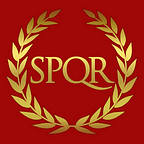Ancient Roman Coins and What They Could Buy
The very word “coin” comes to us from Ancient Rome. Initially, it was one of the titles of the goddess Juno and meant “advisor” or “warner.” Roman workshops, where coins were minted, were located near the temple of Juno Moneta on the Capitoline Hill; thus, Roman money came to be named after the goddess.
In early Rome, there were no coins; instead, bronze ingots were the monetary equivalent in trade. Under Servius Tullius, these were standardized: a rectangular-shaped ingot of a certain weight with an image of a bull, i.e., equivalent in value to the animal, was called “Aes signatum” or “stamped bronze.” The term “assignation” derives from this name. But such ingots weighed about 1.4 kg, making them inconvenient for shopping.
The first round of coins began to be minted by the Romans in 312 BC, and they were called “Aes Grave” or “heavy bronze.” Later, the name was shortened to “as.” One was equivalent to a pound of bronze. The obverse of the as featured the profile of one of the gods, usually Janus. In imperial times, this was replaced by the image of a deified emperor. Initially, the reverse depicted a ship’s prow, later replaced by other symbols; for instance, on Nero’s, the…
